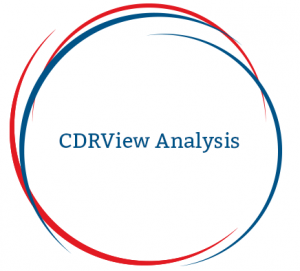
Features
![]()
For processing continuous flow of records, it enables current analysis from reports and dynamic charts.
![]()
It enables several filters per origin (caller code) or destination (called code); trunks or incoming links; Central; Platform; Server; trunks or outbound links; exit and destination routes (called code); among others.
![]()
It enables the definition of any time window to calculate records counter or extractions from the current time to any date/time within the period of data conserved in the base.
Functionalities
Calls Detailing – Report of call or connection attempt records, enabling individual subscriber or recourse-level analysis with service, area code, route, routing and retention hours, attempt result, error causes, and several causes relevant for understanding the communication events;
Performance – Presents consolidated data related to usage data record (UDR) and calculates counters, performance and behavior indicators in several dimensions such as volume, intensity, rates, frequencies and durations;
Search Feature – searches and displays features or codes meeting criteria applied on KPIs. Answers questions such as “What are the “n” subscribers in the xxx region with the largest voice and/or data traffic for YYY region?” or “within a given period, what are the “n” largest subscribers in terms of number of attempts received or originated – or connections made – from/to a certain URL origin/destination, and/or that had KPI or time characteristics below or above certain thresholds”
Templates Definition – Allows the definition or selection of templates for KPIs extraction, specifying the period of analysis, primary filters on resource classes, and secondary filters on time, volume, type and traffic orientation properties, among others. Indicators are calculated, in presentation time, using formulas defined in an XML document editable by the system administrator;
Drill-down – The possibility to drill-down any cell of a performance template makes it easy to explain certain behavior through the analysis of components (deepening the numbering plan by expanding the number of digits considered) or even the records that made up the calculation of the indicator.
Matrices – Surveys and presents relationships between resources characterized by KPIs, as From/To tables;
Dynamic Series – Surveys and presents time series in tables and charts, for any period and ranges in the database and updates them, if desired, dynamically on screen;
Anatel Indicators – Calculates call and data connection indicators of RGQ, extractable from CDR to SMP, SCM and STFC;
Behaviors – Identifies among other behaviors the perseverance and dropout rate regarding situations of strong degradation;
Frequency – Surveys the distribution of frequency for performance and use indicators.
Concatenation – Presents call records that fall within the concatenation conditions established by Anatel Resolution No. 604.
Consolidation in Mobile Data – Presents consolidated data related to downlink/uplink data traffic volumes, call counter, considering the grouping per Service, and connection policies for PGW and GGSN network elements.
Connection Policy Change – Presents consolidation of the number of different subscribers, and their call counters, which made changes in the connection policy, considering the groupings combination per Pricing Type, Pricing Characteristics, Origin Area, Classified and Regional Group.
CDRView Export – Extracts information as a result of reductions made by CDRView, periodically providing data to other applications via schedules programmed by the user.
© 2016 Visent
